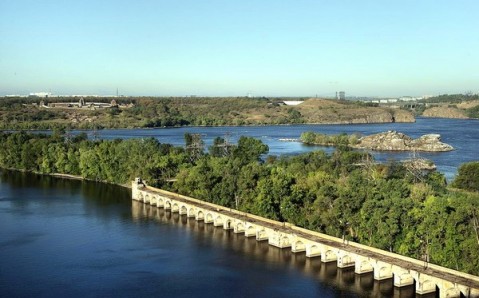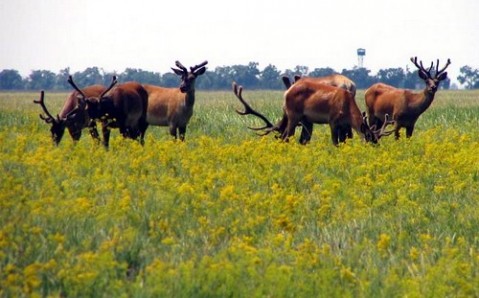Kamennaya Mogila
•
Zaporizhzhia (362 km.)
Kamennaya Mogila
•
Zaporizhzhia (362 km.)
Kamennaya Mogila (‘Stone Tomb’) is one of the most unusual geological formations in the world and an astonishing natural monument. It is a sand hill, located in the middle of the steppe, covered with large stones of peculiar forms. This ‘stone island’ is around 14 million years old, which makes it the oldest archeological and cultural monument in Ukraine! Today, because of its originality, Kamenna
Khortytsia
•
Zaporizhzhia (360 km.)
Khortytsia
•
Zaporizhzhia (360 km.)
Khortytsia is the heart of Zaporizhzhia, rightfully attracting the most people to the region. It is the biggest island on the Dnieper River and the subject of many myths and legends. The island is famous for its unique nature and interesting archeological findings. The traces of many cultures and epochs are interwoven here: in the past, Khortytsia was a home for Scythians, Sarmates, Pechenegs, and
Askania-Nova
•
Kherson (240 km.)
Askania-Nova
•
Kherson (240 km.)
‘Askania-Nova’ is one of the oldest and largest biosphere reserves in Europe, located in a remote part of the Kherson steppe. Nowadays, this unique island of primordial nature, where live many rare animal species and exotic plants, is recognized as one of the Seven Wonders of Ukraine and is a part of the world network of UNESCO’s biosphere reserves.
A lover of nature, baron Friedrich Falz-Fein, e
Oleshky Sands
•
Kherson (175 km.)
Oleshky Sands
•
Kherson (175 km.)
The huge desert that spreads over several districts of the Khersons’ka Oblast’ is one of the most striking places in southern Ukraine. Oleshky Sands is the biggest sand area in Ukraine, and some even call it the only desert in Europe.
The sands, located near the lower reaches of the Dnieper River, have existed for many centuries, but the desert – in form that we know it today – appeared relativel

 Southern
Southern




